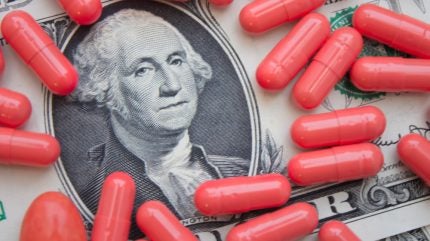
The US Department of Health and Human Services (HHS) said it is “taking immediate steps” to implement a recent Executive Order (EO) by President Donald Trump that is set to overhaul the pricing framework of prescription medicines in the country.
Based on a “most favoured nation” pricing model, Trump’s policy requires drugmakers to match the lowest prices they offer in comparable countries. If companies do not adhere to this, they could face regulatory action.

Discover B2B Marketing That Performs
Combine business intelligence and editorial excellence to reach engaged professionals across 36 leading media platforms.
The target price “is the lowest price in an OECD country with a gross domestic product (GDP) per capita of at least 60% of the US GDP per capita,” HHS said in a 20 May statement.
An OECD country is a member of the Organisation for Economic Co-operation and Development (OECD), an international organisation of 38 countries that align on democracy and market economy. The economies of the current 38 OECD member countries accounted for approximately 46% of the world’s GDP in 2021.
The health authority said pharmaceutical manufacturers are expected to meet these identified specific targets that satisfy the requirements of the EO.
“For too long, Americans have been forced to pay exorbitant prices for the same drugs that are sold overseas for far less,” said HHS secretary Robert F Kennedy Jr.

US Tariffs are shifting - will you react or anticipate?
Don’t let policy changes catch you off guard. Stay proactive with real-time data and expert analysis.
By GlobalData“That ends today. We expect pharmaceutical manufacturers to fulfil their commitment to lower prices for American patients, or we will take action to ensure they do.”
HHS stated that each manufacturer will need to commit to aligning US pricing for all brand products markets where there are no generics or biosimilars. Generics and biosimilars are significantly cheaper than branded medications, which usually drives down the cost across the board for that drug market. When pharmaceutical companies do not face competition from these copycat drugs, drug prices are generally high.
US patients pay the highest prices for prescription drugs, often nearly three times more than those in other developed nations. According to a Reuters article, pharma companies launched new US drugs at prices 35% higher in 2023 compared to those launched in 2022.
Drug price reforms have been a key tenet of the current Trump administration, with the president previously saying that the country will “no longer tolerate profiteering and price-gauging from big pharma”.
As of 12 May, when the EO was signed, drug manufacturers have 30 days to meet the targets.
There has been inevitable pushback to the pricing reforms. The Pharmaceutical Research and Manufacturers of America (PhRMA), the sector’s leading trade group, warned that the move would have serious consequences for innovation and access.
On 12 May, PhRMA CEO Stephen Ubl said: “To lower costs for Americans, we need to address the real reasons US prices are higher. Foreign countries not paying their fair share, and middlemen driving up prices for US patients.
“Importing foreign prices from socialist countries would be a bad deal for American patients and workers. It would mean less treatments and cures and would jeopardise the hundreds of billions our member companies are planning to invest in America – threatening jobs, hurting our economy and making us more reliant on China for innovative medicines.”





